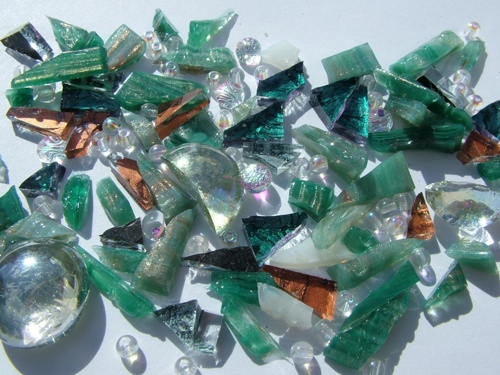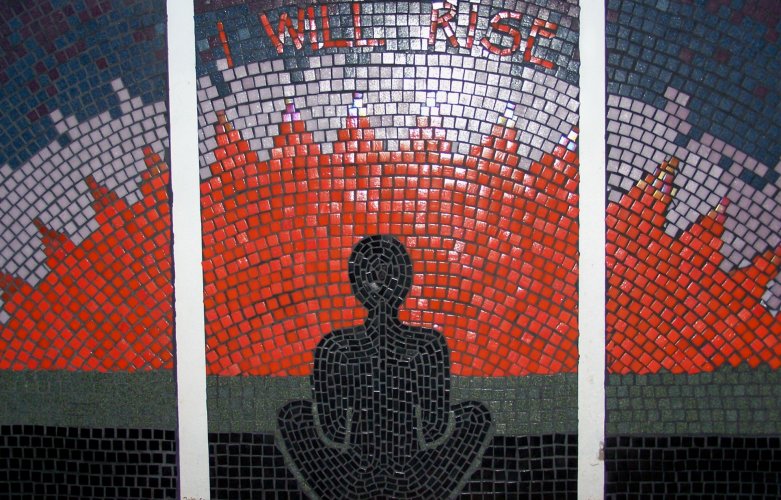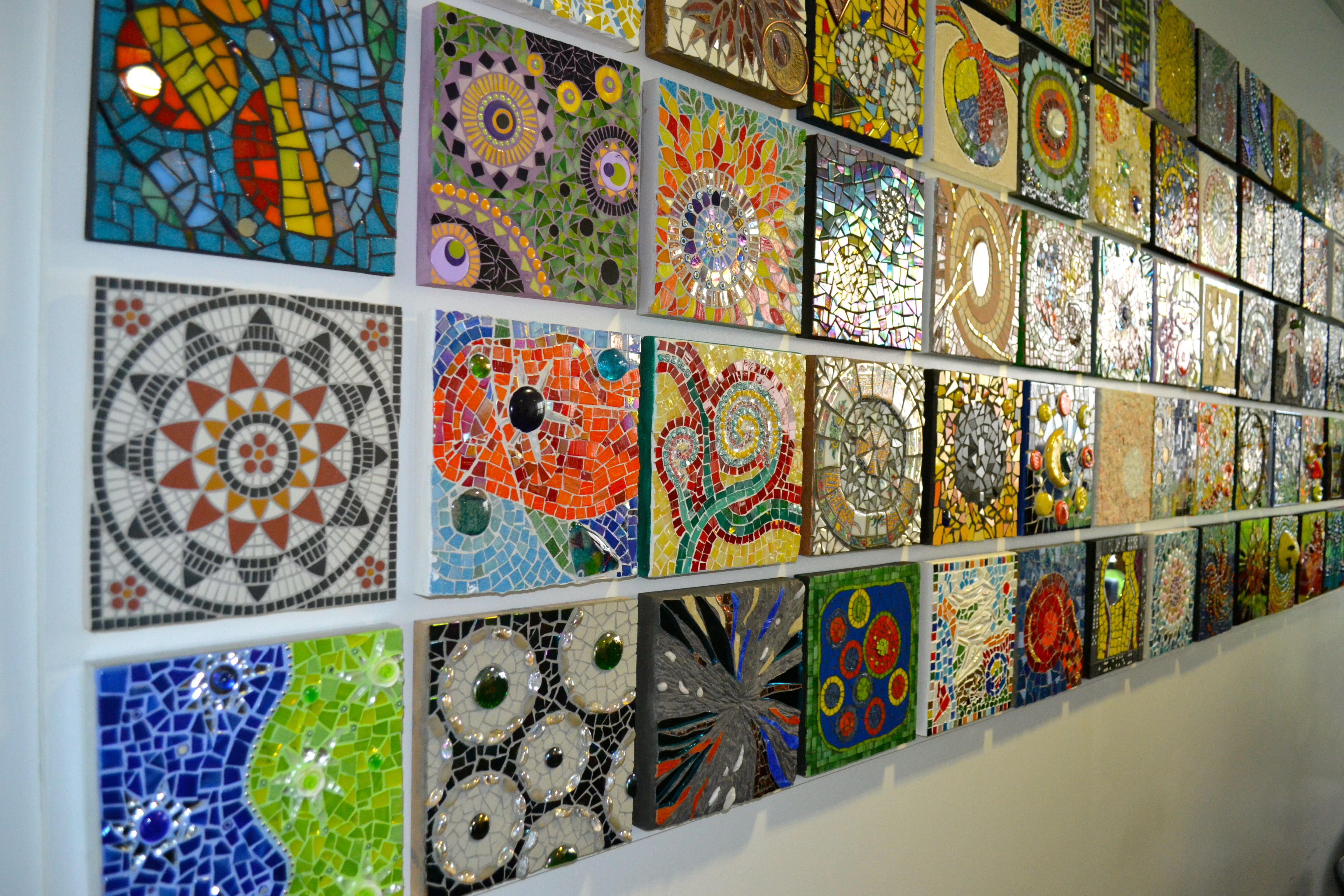There is something special about making mosaic art. If you have already been captivated, you will know what I am talking about. If you have not come under its spell, let me explain.

Mosaic making has some (almost mystical) ability to take us beyond ourselves and into ourselves, both at the same time. In connecting to each piece of the mosaic by handling and shaping every tesserae (often numbering into the thousands) we are mirroring processes that are essential to our well-being as humans. Firstly, the need to be connected to something bigger than our selves and secondly, the process of re-connecting to the different parts of our inner-self that are often disconnected and supressed.

It is as if, in the act of making art from broken pieces, we are somehow repairing the fractures in our own soul and in our own experience of community – or at least holding on to hope that this is possible. I am convinced that, for many mosaic artists and makers, there is a deep psychology and anthropology at work as we work – not necessarily on a conscious level, but in a subconscious, wisely intuitive sense.
I have lost count of the number of times my students have said to me “Coming to your class is like therapy”. Yes, mosaic is therapy – healing for the wounded, fractured self. It is also healing in a communal sense. It is no surprise to me that community mosaic is such a thriving art form. As well as my own experience in community mosaics with womens groups, refugee children, teens in state care & children with special needs, there are many examples of mosaic as a tool for social transformation (see here and here and here). Get people together on a mosaic project, and not only are grey spaces transformed to life, but connections between people are made. Something wonderful (art, beauty, community, purpose) comes out of nothing, out of a social void. People who have not touched their own creativity for years are suddenly like children playing. “I have not had such fun in years” is a common refrain from those involved in my community mosaic projects. And in such an environment, magic happens.

S:VOX community mosaic
Of course, I am not claiming that mosaics is alone in creating such impact. I have felt similar transformative power unleashed when writing for example. But I, and may other mosaicists, will claim that there is something special in our medium that is related to the materials we use, to the processes we go through and to the tessellated element of our art. For the time being, I will continue to mull over the underlying commonalities of transformative art…
And so to an opportunity for you, wherever in the world you may be. This spring, a wonderful communal mosaic initiative came to fruition. Over 100 artists (of all levels) from all over the world worked in their own studio’s to create a 25 x 25cm mosaic on the theme of ‘Circles’. The resulting pieces (made of pieces) were bought together into a stunning whole, transforming the bland waiting lounge in a public London hospital. As if that was not enough, the project, organised by mosaic artist Karla Duterloo, raised money for the work of a not-for-profit organisation, the Esther Benjamin Trust, which rescues Nepalese children sold to slavery. The founder of the charity spoke at the launch of this stunning public art mural and his message of hope and tranformation through mosaics really touched me. Read all about the launch and see the pictures here.

A bit of the London Middlesex Hospital mosaic wall
Now, they are doing it again! This time, the theme is “Eyes of Nepal“. The aim is to create a permanent public art exhibition (made of individal 25 x 25cm mosaics) in Kathmandu, and to raise money and awareness for the Esther Benjamin Trust in the process. Mosaic makers from all round the world are invited to take part and the added twist is that internationally renowned mosaic artist and glass fusion maker, Martin Cheek, will give all participants a glass fusion of an eye around which you can make a mosaic.
So, whether you are fairly new to mosaics or are well established, do not rule yourself out of this wonderful initiative. Rule your self in and use your love of mosaics to make a difference! Lets help the organisers get hundreds of mosaic makers to take part, create a stunning showcase of mosaic art to wow the world and raise loads of money for the truly transformative work of the Esther Benjamin Trust. Click here to find out more…go on go on go on!
Beautiful, beautiful, beautiful!
xx
I really enjoyed reading this article. Oftentimes, as I work I can sense the “healing process” that you describe.of putting back together the broken pieces, but never put into words.
I hear those same comments from my students, as well.
Thank you for your insight into the psychology of mosaics.
It felt good for me to articulate what seems to be at work under the surface – really glad it connected with you. More thoughts brewing on the subject…!
Inspirational! Just the boost to the spirit of my creativity that I needed. Thanks 🙂
Really happy that my writing have given you a boost – makes it worthwhile 🙂 Thank you for your encouragement.
Dearest sweet Concetta, this is really such a inspiring post! I love how you describe the making of mosaic and your thoughts on things. Have a lovely merry happy sunday and love to you!
it’s been a long time since i have worked on any mosaic projects or taken a class, but i remember how completely mesmerized, involved & absorbed i would get – i couldn’t stop. recently, i was cleaning our junk room, (which should be a studio) and i’ve a 3/4 finished piece in there: it was like a siren call: i couldn’t leave it alone. thanks for the post.
mare
PS: love this font.
That is a great story Mare. Have you started nipping and sticking again? Important to listen to those calls… By the way the font seems to be a hit with lots of people! Thanks for sharing this story.
Hello dear Concetta!
I love this post. Painting has definitely been therapy for me and I’m so thankful to have discovered a passion for it. The last 2 years would not have been as bearable with my paints. Thank you for the kindness on my last post, made me smile.
Love to you,
Jenny